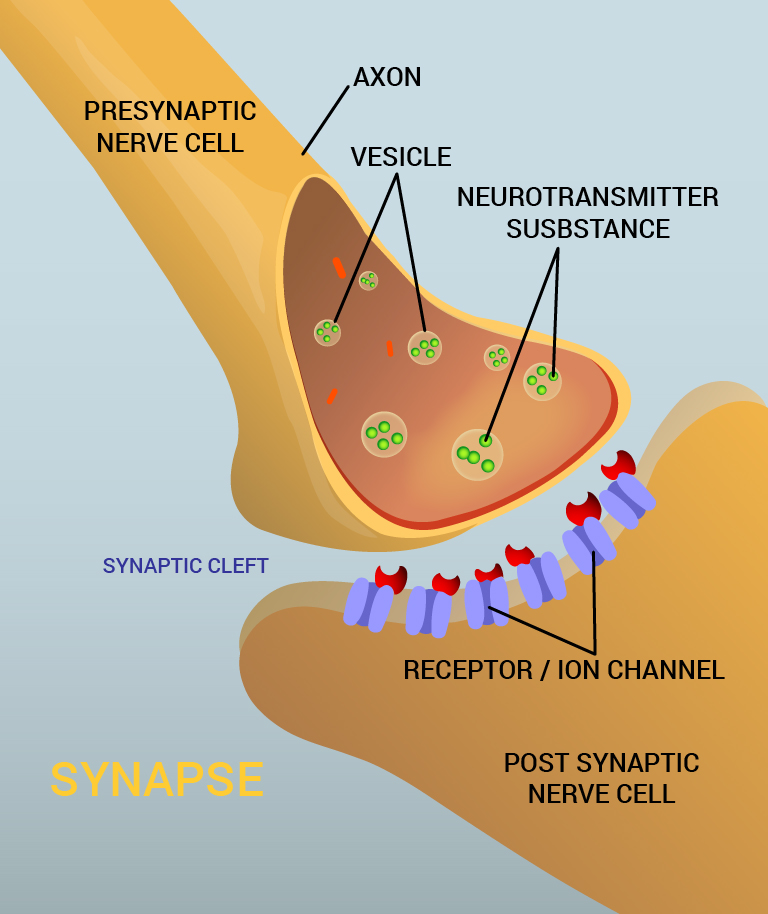Figure 10 shows a detailed view of a chemical synapse. The axon terminal belongs to what we call the pre-synaptic cell. The second cell is called the postsynaptic cell. The cleft between these cells is called the synaptic cleft. At the axon terminals there are numerous vesicles containing molecules we call neurotransmitter substances. Examples of neurotransmitters include acetylcholine, epinephrine (sometimes called adrenaline) and dopamine.
The following occurs in the synapse (see animation Fig.11):
An action potential (nerve impulse) arrives at the axon terminal. Here, ion channels for calcium ions (Ca2+) are opened in place of sodium. The influx of calcium into the nerve terminal causes vesicles containing neurotransmitters in the axon terminal, to fuse with the cell membrane. The vesicles release the neurotransmitter that they contain into the synaptic cleft. This fusing of the vesicles to the cell membrane and release of neurotransmitter is known as exocytosis. The neurotransmitter then diffuses across the synaptic cleft to the postsynaptic cell membrane. Here it binds to their specific receptors in the cell membrane. This binding leads to opening of an ion channel, such as a sodium or potassium channel. Neurotransmitter substances bind to their receptors for a very short time before it is eliminated by enzymes and / or taken back up by presynaptic neurone. Thus, the stimulation induced by a neurotransmitter substance will only last for a very short time. This allows one nerve impulse to be completed before the next nerve impulse comes along.
If the neurotransmitter substance opens a sodium channel, sodium flows into the postsynaptic neurone. This increases the likelihood that the membrane potential at the start of the axon of the postsynaptic neurone will reach the threshold value for action potential generation. On the other hand, if the neurotransmitter substance opens potassium channels, the likelihood that the postsynaptic neurone will reach the threshold value is diminished as potassium flows out of the postsynaptic cell and membrane potential drops to -100 mV, for example.
Therefore, it is the sum of what happens at all of the synapses on a nerve cell that determines whether the postsynaptic neurone transmits a nerve impulse or not.
Fig.11




